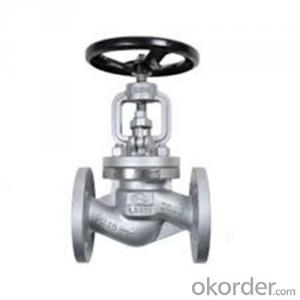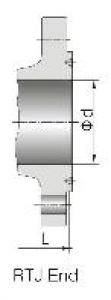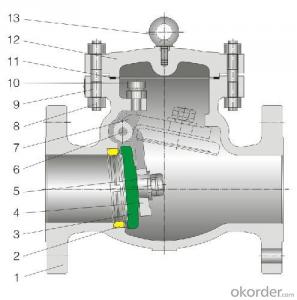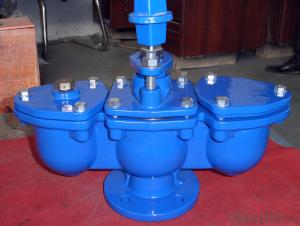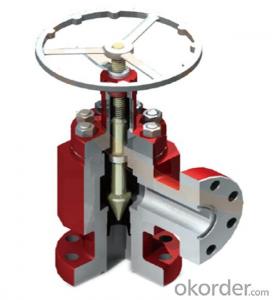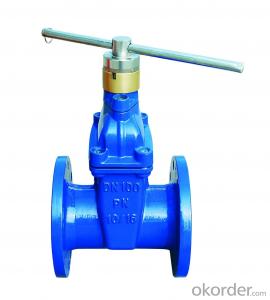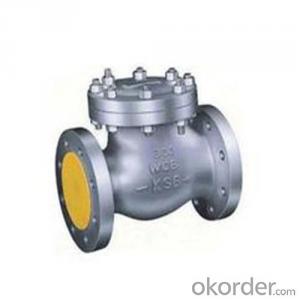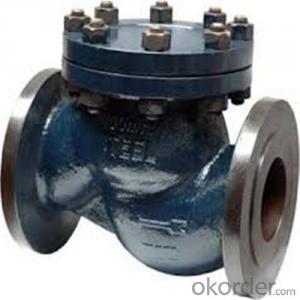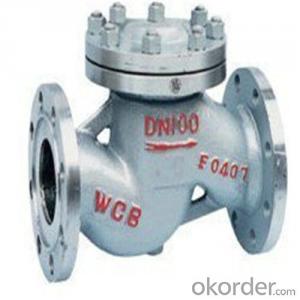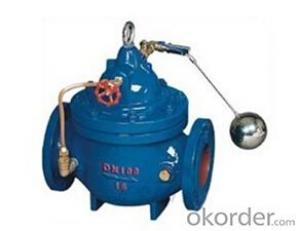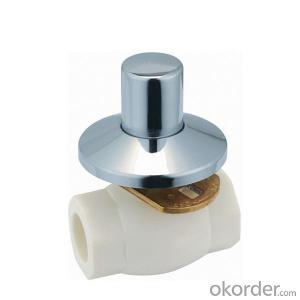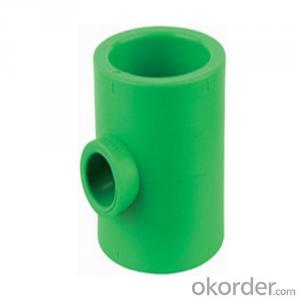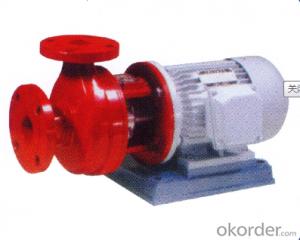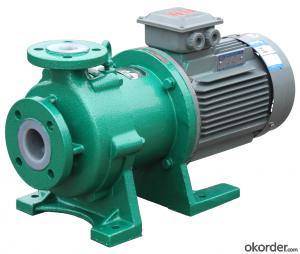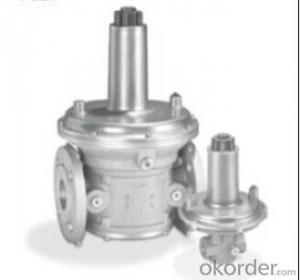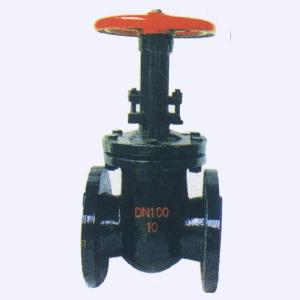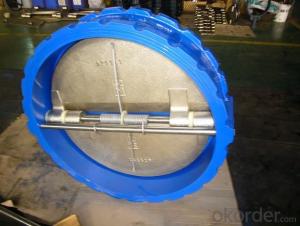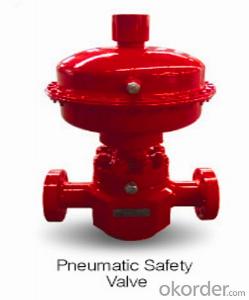API Cast Steel Lift Check Valve size 50 mm
- Loading Port:
- Shanghai
- Payment Terms:
- TT OR LC
- Min Order Qty:
- 10 pc
- Supply Capability:
- 100 pc/month
OKorder Service Pledge
OKorder Financial Service
You Might Also Like
API Cast Steel Lift Check Valve 150 Class
The features of Cast Steel Lift Check Valve
Bolted Bonnet;Swing and lift disc;Metallic seating surfaces.
Body and Bonnet Connection of Cast Steel Lift Check Valve:
The body and bonnet of Class150~Class900 check valves are usually with studs and nuts.And the body and bonnet of Class1500~Class2500 check valves are usually of pressurized seal design.
Body-To-Bonnet Joint of Cast Steel Lift Check Valve:
Stainless steel + flesible graphite wounded gasket is used for Class 150 and Class 300 check valve;Stainless steel + flexible graphite wounded gasket is used for Class 600 check valve,and joint gasket is also optional for Class 600 check valve;Ring joint gasket is used for Class900 check valve;Pressurized seal design is used for Class 1500~Class 2500 check valves.
Seat of Cast Steel Lift Check Valve:
For carbon steel check valve,the seat is usually forged steel.The sealing surface of the seat is spray welded with hard alloy specified by the customer.Renewable threaded seat is used for NPS<10 check="" valves="" and="" welded="" on="" seat="" can="" be="" also="" optional="" if="" being="" requested="" by="" the="" customer.welded="" is="" used="" for="" nps="">12 crbon steel gate valves .Forstainless steel check valve,integral seat is usually adopted ,or to weld hard alloy directly integrally.Threaded or welded on seat is also optional for stainless steel check valve if being requested by the customer.
Parameter of Cast Steel Check Valve:
Standard Criteria | ASME/ANSI/API customize |
Pressure Rating | 150 Class 300 Class 600 Class 900 Class 1500 Class 2500 Class customize |
Valve Size | 50 mm 65 mm 80 mm 100 mm 125 mm 150 mm 200 mm 250 mm 300 mm 350 mm 400 mm 450 mm 500 mm 600 mm 650 mm 700 mm 750 mm |
2 inch 2.5 inch 3 inch 4 inch 5 inch 6 inch 8 inch 10 inch 12 inch 14 inch 16 inch 18 inch 20 inch 24 inch 26 inch 28 inch 30 inch customize | |
Actuator | Automatic customize |
Connection | Butt Welding Flange RF Flange RTJ customize |
1-Body Material | A216 WCB A351-CF8 A351-CF8M customize |
2-Seat ring | A351-CF8 A351-CF8M A105+13Cr Tool Steel+A105 customize |
3-Disc | Tool Steel+A216 WCB A351-CF8M A351-CF8 A216 WCB+13Cr customize |
4-Arm | A351-CF8 A216 WCB A351-CF8M customize |
5-Nut | A194 8M A194-8 A194 2H customize |
6-Arm pin | A182-F6a A182-F316 A182-F304 customize |
7-Yoke | A351-CF8 A351-CF8M A216 WCB customize |
8-Bonnet nut | A194 8M A194-8 A194 2H customize |
9-Bonnet bolt | A193-B8 A193-B8M A193-B7 customize |
10-Bolt | A193-B7 A193-B8 A193-B8M customize |
11-Gasket | graphite+304 graphite+316 customize |
12-Bonnet | A216 WCB A351-CF8M A351-CF8 customize |
13-Eye bolt | A181 customize |
Design Standard | API 6D BS 1868 customize |
Connection Standard | API 605 ASME B 16.25-2007 ASME B 16.47A ASME B 16.47B ASME B 16.5 MSS SP-44 customize |
Test Standard | API 598 API 6D customize |
Face to Face | ASME B 16.10 customize |
Pressure-temperature ratings | ASME B 16.34-2004 customize |
Wall thickness dimension | API 600 BS 1868 |
FAQ of Cast Steel Check Valve:
Q1:I can’t find the type of steel check valve which I need. what can I do?
The chart above only lists out some common composition of steel check valve parts.We may provide other different parts material composition according to the customer's request or the actual valve working condition.
Q2:Which certification do your products pass?
Our products are in accordance with ISO 9001、ISO 14001、API 6A、API 6D、TS CE、API607/6FA/BS6755.
- Q:The atrioventricular valves will be open whenA. Atria are in diastole and ventricles are in systole B. Pressure in the ventricles is greater than the pressure in the great arteries C. The ventricles are being passively filled D. The ventricles are in isovolumetric contraction
- Answer: (c) The ventricles are being passively filled. During diastole, a normally-functioning mitral valve opens as a result of increased pressure from the left atrium as it fills with blood (preloading). As atrial pressure increases above that of the left ventricle, the mitral valve opens. Opening facilitates the passive flow of blood into the left ventricle. Diastole ends with atrial contraction, which ejects the final 20% of blood that is transferred from the left atrium to the left ventricle. This amount of blood is known as end diastolic volume (EDV), and the mitral valve closes at the end of atrial contraction to prevent a reversal of blood flow. Mitral valve also opens when right ventricle is passively filled.
- Q:1990 Pontiac Sunbird, I took a piece of hose going to the egr valve to try and see if it is working properly, but with car off, I can suck through, and blow out into hose going to egr valve, and it doesn't seem like there's any seal stopping air flow either way...is it supposed to, or what is this supposed to do?
- What is it that you are trying to do? Your question is sort of vague.
- Q:My 99 accord has been smoking bluish white smoke out of the exhaust only at high RPMS- 5000 and up, but NOT at lower RPMS. Obviously I rarely go that high, but I've feared the worst. I've checked the coolant, its green without contamination. today a mechanic discovered that someone installed the wrong pcv valve on the car- the one that belongs on the v6 model, and that it is somehow larger. the mechanic suggested it was possible that this was the cause of the smoke- the oil was getting into the intake manfold, and into the cat, and that when the engine is at higher rpms, and the gases/ heat increase, it burns up the oil in the manifold/cat. He said IF that is the cause it should clear up in a week or so. Does this sound to good to be true? or is it possible? the car does have 160,000 on it, but i've owned several hondas with much more mileage that didn't smoke at all.
- a stuck PCV valve will cause oil burning too.....so that is a good place to start.
- Q:I have a shut off valve under the sink that leaks when you try to turn it OFF. Why is that?I need to fix faucet leak as well. do i need to shut water off to fix faucet? Need to fix valve first. Cant figure out why valve leaks when turning off.
- Because the stem washer is worn out and needs replacing, you will have to shut off the water to the whole house and you might as well replace the shutoff, probably just about as cheap and a lot more reliable fix.
- Q:Just wanted to know what the significance of the number of valves is?I know that theres valves for intake and exhaust if i'm correct.if there is four i'm guessing its 1 for air and 1 for fuel if its fuel injected. and 2 for exhaust?are there bikes with 3 valves or more than 4 valves and why?and a basic carburated 2 stroke just has an intake from the carb side and then an exhaust.please give me more info and let me know if i'm correct or not.
- It's two intake valves and two exhaust valves. The intake valves both have the same fuel/air mix going through them. It just gives the engine a bigger port to send the mixture through. Thus sending more fuel/air mix into the engine for more power. It's easier to fit four smaller valves than it is to fit two big valves into the combustion chamber. And the two exhaust valves give a bigger port to get the burned gas out of the combustion chamber faster.
- Q:i believe it's to do something to the valve guide to make it the right clearance n not go straight to the valve seat right? or is valve seat next?
- Once the valve guide is installed, it has to be reamed to fit the valve stem. After it has been reamed to fit the valve stem, the new valve needs to be seated in. (The valve seat should have already been done by this point) This can be done with a machine tool, or it can be ground in by hand with valve grinding compound. Once this is accomplished, the valve is removed, everything is cleaned thoroughly, and the valve is reinstalled with the spring and keeper. Normally you would do all the operations to all the valves at the same time. (That is, you don't grind in one valve, then go back and ream another valve stem. You do all the operations required at one time. So you would install all the valve guides, then ream them all, then grind or face the valve seats, then check the valve contact area, then remove all the valves, clean the head and valves up, and then reasemble into a completed head unit.)
- Q:I got an engine knock and backifiring and no power not even to move the car just a few feet. I figured its the vales that are eather broken or burned out. I just started to take my top end apart to check and change borken or damaged valves so i can drive the car once again. My question is, when i take the valve cover off i can see what looks like the valves and the springs and something in the middle of the springs, now what iam i gona be looking at for a broken/damaged valve since i dont see any obvious damages but i could be wrong.
- you need to pull the head(s) off to see the valve. all you are seeing is the valve stem wich is not going to help you determine much. remove the intake manifold and then the head(s) the underside of the head (combustion chamber) is where you will be able to visualy inspect the valves. more likely you have weak or broken springs, lifters arent pumping up or your cam is going flat. as for the knock sound, that is a whole other thing to diagnose.
- Q:I have an 98 Mitsubishi Eclipse rs and its a little jerky while driving and i think it might be the PCV valve but I don't know where it is located.. where is it? and would this cause the check engine light to come on?
- Your okorder okorder , which covers all Eclipse/Talon models.
- Q:I am replacing the Camshaft, lifters, and timing chain on a SBC 350. The motor is still in the car and I have the valve covers and manifold removed (and other components). The camshaft break-in procedure recommends removing the inner valve springs and running engine at 2000-2500 rpm for 20-30 minutes. MY QUESTION: I have the valve spring compressor tool to remove the springs. HOW do I prevent the valve from falling into the cylinder when I remove the spring? Can I conduct the break in without removing the inner valve springs?
- the reason they want you to remove the inner springs is so that there won't be too much valve spring pressure pressing down on the cam lobes. Too much valve spring pressure on a new cam will eat up the cam lobes. You can also find some weaker valves springs to run just during the break in and then swap them out for the correct springs you are going to run permanently. The easiest way to keep the valve from falling in the cylinder is to use a compression gauge hose. Remove the schraeder valve from the end of the hose that screws in the spark plug hole. Now you can connect an air hose with compressed are into the cylinder. that's how everyone I know has ever changed valve springs.
- Q:I have a Chevy Silverado 2500 5.7L V8. I have been having problems with passing smog. First one failed because it needed a new cat. Replaced it and tested again. NOx emissions are off the chart (1450/1006 max of 992/59615/25mph). I replaced the EGR valve based on a suggestion. Quick test today said the NOx emissions are still way off. Suggested that I change the EGR solenoid valve and also pull the EGR valve and use a coat hanger to clean some of the carbon build up. I purchased a new solenoid today but looking at it I noticed something. Since there are what are appear to be two ports on one side of the solenoid, I must have replaced the vacuum hose onto the wrong one after replacing the EGR valve. How much would this make a difference on the test readings taken? Would it be beneficial to just replace the solenoid anyway or try to test again with the current one but connected properly?
- This Site Might Help You. RE: What would happen if the EGR solenoid valve isn't connected properly? I have a Chevy Silverado 2500 5.7L V8. I have been having problems with passing smog. First one failed because it needed a new cat. Replaced it and tested again. NOx emissions are off the chart (1450/1006 max of 992/59615/25mph). I replaced the EGR valve based on a suggestion. Quick test today...
1. Manufacturer Overview |
|
|---|---|
| Location | |
| Year Established | |
| Annual Output Value | |
| Main Markets | |
| Company Certifications | |
2. Manufacturer Certificates |
|
|---|---|
| a) Certification Name | |
| Range | |
| Reference | |
| Validity Period | |
3. Manufacturer Capability |
|
|---|---|
| a)Trade Capacity | |
| Nearest Port | |
| Export Percentage | |
| No.of Employees in Trade Department | |
| Language Spoken: | |
| b)Factory Information | |
| Factory Size: | |
| No. of Production Lines | |
| Contract Manufacturing | |
| Product Price Range | |
Send your message to us
API Cast Steel Lift Check Valve size 50 mm
- Loading Port:
- Shanghai
- Payment Terms:
- TT OR LC
- Min Order Qty:
- 10 pc
- Supply Capability:
- 100 pc/month
OKorder Service Pledge
OKorder Financial Service
Similar products
New products
Hot products
Hot Searches
Related keywords
